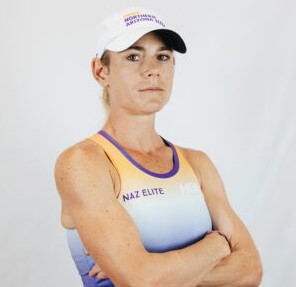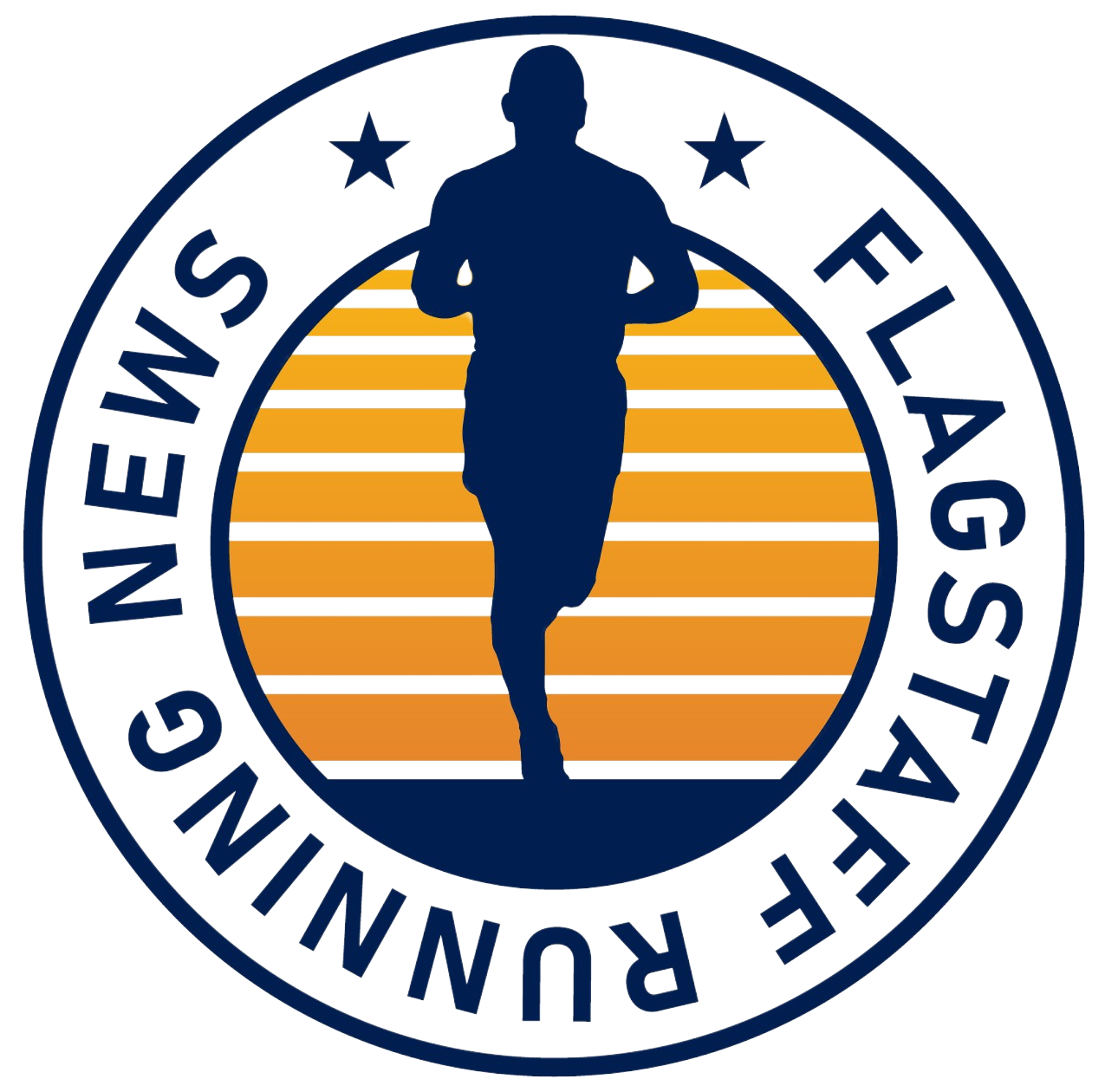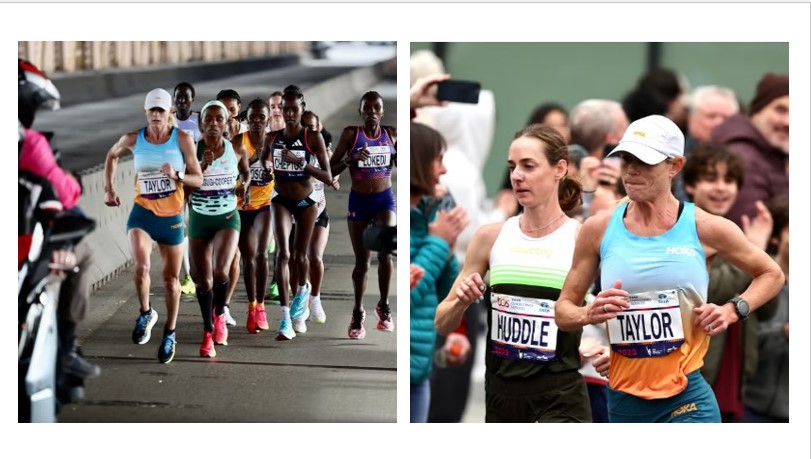A year ago, at the New York City Marathon starting line on Staten Island, Kellyn Taylor experienced what for her was an unusual circumstance, one she’s not often faced in her successful, yet stressful, pro running career.
She felt good. Like, really good. Nothing hurt.
Healthy, for once, not even a niggle.
Fit, doing workouts faster than ever, some 10 months after giving birth to daughter Keagan.
Confident, not worried about internal or external factors that might affect her performance.
Might this be the race, the one in which the then 37-year-old Hoka NAZ Elite marathoner just might put it all together and run as she’s long known she’s capable of? After all, Taylor was due, long overdue, for a good break after a series of unfortunate events conspired to keep her off Olympic distance teams.
This hard-as-nails, never-surrender athlete known for donning her signature cap had run the previous two Olympic Marathon Trials unbeknownst to her with stress fractures – femoral in 2024, tibial in 2020 – yet still was in the mix. Then, last summer off little training, she finished sixth in the Olympic Trials 10,000 meters despite being later diagnosed with a torn medial meniscus in her left knee, requiring surgery.
But at New York last year, everything seemed aligned in Taylor’s favor.
Except for one thing: the pace.
The race went out slowly, glacially slow for an elite women’s marathon — 2:31 pace through the first 20 miles – before turning into a sit-and-kick endeavor in the final three miles, with pure speed favoring others such as Hellen Obiri (the winner), Letesenbet Gidey and Dark Sky’s Sharon Lokedi over the likes of Taylor.
She finished eighth, the top American, in 2:29:48, 2 minutes 25 seconds behind Obiri. It was the slowest NYC women’s winning time since 2010.
Afterward, Taylor second-guessed herself. Should she have made a bolder move early on? Should she have made it an honest pace from the start? Did she squander all that built-in fitness by not being aggressive enough?
Yes, Taylor led the pack through 20 miles and maintained a slight lead at 22 miles, but a 5:04 23rd mile dropped her from the pack. It was a solid race for Taylor, a fine race actually, but she felt it could have been so much more.
“I feel I kind of blew an opportunity last year at New York because I was so fit,” she said in a mid-October interview at Flagstaff’s Late for the Train. “I was executing workouts better than I ever have. I think I was doing stuff on Lake Mary (Road) that nobody was doing out there. I did my 15-mile steady state, one of our big sessions and average 5:28 pace. People aren’t running that. Lauren (Hagans) just had a great segment and she averaged 5:38 for 14. But the (NYC) race was not run in such a way that you were going to run fast. It was an opportunity I should’ve capitalized on and went and ran my thing instead of hanging back.”
What Taylor’s “thing” has been her entire career, stretching back some 13 years, has been to grind it out, wear competitors down, push and push and see who yields first. She prides herself on being tough. Tougher than the rest, perhaps. And if that means she races while not 100-percent healthy, well, that’s what being a dedicated pro runner entails.
So now, jump to this coming Sunday, Nov. 3. Taylor will again toe the line on Staten Island and do her thing through New York’s five boroughs. The situation is different from last November, though. Taylor’s marathon build this time has been abridged, reduced to a frantic eight weeks due to that aforementioned knee surgery in August.
But one thing longtime observers of U.S. marathoners have learned by now is to never count out Taylor. She may be ailing in some races, but she’s always competing. Of that, you can be assured.
And who’s to say that this, her fifth New York Marathon, won’t be the charm, her breakthrough so long sought. In spite of her knee rehabilitation, in spite of being sick for weeks, which comes from rearing four children (2 in December, 4, 6, and 14), she seems capable of at the very least setting her marathon personal best, which rests at 2:24:28 in 2018, well before the super-shoe era.

Taylor is not one to mince words or sugarcoat things, so when she says she’s optimistic, take her at her word. She’s been running marathons for so long – “I don’t even remember which one this is, 13 or 14?” she laughs – that she’s come to expect the unexpected.
“It’s going to be a unique experience this time, in that I won’t know what to expect,” Taylor said of New York. “I think I could go out there and have a great day and surprise myself. On the day, on the start line, during the race, that’s when I’m going to know how it goes and what (strategy to employ).
“That’s kind of (typical) for the marathon, obviously. Because you can do everything right and on that day it could not come together. Or everything can go wrong (in the build) and on the day it can come together.”
Know this much, though: Taylor has never run poorly at New York.
In 2017, her debut, she finished eighth in 2:29:56. In 2019, she was seventh in 2:26:52. In 2021, she was sixth in 21:26:10. Then, last year, eighth in 2:29:48.
Taylor said she likes the New York course, considered hilly and technical for a major road marathon, certainly not a place for time-trialists. “It levels the playing field a bit,” she said. Nothing if not realistic and pragmatic, Taylor knows her limitations when it comes to the marathon and has worked well within those confines.
“OK, I’m not going to go out and run 2:14; I’m just not, and I never will,” she said, bluntly. “It’s just the facts. But do I think I can run (in the) 2:20s? Yes. Yes, last year I thought I was in shape to run 2:23 on that course. That would’ve been close to the course record, which is 2:22:30, I think. So that was weird that (the pack) didn’t go out after that record because they could’ve blown it out of the water. But, like, I do think I can contend a little better in a race like that.”
The women’s marathon has been progressing at an unbelievable rate the past few years – the world record was obliterated in Chicago three weeks ago by Kenya’s Ruth Chepngetich, who ran 2:09-56 – so perhaps the pace will be much quicker this year than last.
Whatever transpires on Sunday, Taylor said, she will be ready to respond and run by feel. That’s a lesson she learned last year in New York. She may have only eight weeks of training this time around, but she’s a marathon veteran and can rely on guile and guts – two of her most valuable traits.
“That’s something we’re definitely counting on,” she said. “My mileage isn’t crazy. It’s gotten kind of high last week and this week, going from 60 to 80 to 106 last week to about the same this week. But I don’t need to run 130 miles. I do have the experience of the course. I’ve done it four times now and ran well every single time. I have the experience of running the marathon.
“I’ve never had a complete disaster of a race even if I’ve been broken. So, I do have those in my back pocket to rely on. It’s going to be a unique experience in that I won’t know what to expect. I think I could go out there and have a great day and surprise myself.”
Taylor has been training in Flagstaff with NAZ Elite teammate Aliphine Tuliamuk, who also is running in New York. Tuliamuk, the 2020 Olympic Trials marathon champ, has been dealing with a serious high hamstring tear and has been on the same abbreviated training plan as Taylor. Taylor was vague when asked if she and Tuliamuk will work together in New York, saying “we’ll see what happens.”
That makes sense, since Taylor has always been one to make her own decisions and run her own race.
“When you’re on a short build like me, and (Tuliamuk), you’re just looking for those meaty workouts where you get quality sessions,” Taylor added. “You don’t have time to do the things that I call, I don’t know, fluff. I’m not going to be doing K’s (repeats) and 400s. I haven’t been on the track myself (this build up).
“Part of the reason I do well (in the marathon) is that I think I’ve got this pretty much figured out. That’s a strong point of mine: being able to push when things completely suck and nothing’s going your way. Just being able to put one foot in front of the other and keep going.
“I think I’ve always had that. Just growing up with two older brothers and constantly wanting to prove myself. I like proving people wrong.”

“Part of the reason I do well (in the marathon) is that I think I’ve got this pretty much figured out. That’s a strong point of mine: being able to push when things completely suck and nothing’s going your way. Just being able to put one foot in front of the other and keep going.”
Kellyn Taylor
She flashed a wry smile just then. Taylor seems the type who isn’t easily dissuaded. Some might say headstrong, but, in reality, it’s just that Taylor knows what she wants and what’s she’s capable of achieving.
Which is why, in the past, she has occasionally raced when injured.
“I think I have a hard time engaging what is significant and what is not,” she said, referring to injuries. “I often can’t tell if it’s something that takes weeks or months to get better or something I can push through. You have to pick and choose what it is, because if you feel any little niggle and say, ‘Oh, I can’t run today,’ you’re not going to run much at all. There’s always something.”
Some observers thought Taylor’s season was over after the femoral stress fracture in last February’s Olympic Marathon Trials. There didn’t seem to be enough time for her to heal and properly build for a shot at making the uber-competitive U.S. 10,000 meter Olympic team in June.
Taylor, nonetheless, persisted. She huddled with coaches Jack Mullaney, Jenna Wrieden and NAZ Elite executive director Ben Rosario and lobbied to give the 10,000 meters a shot last summer. Problem was, she didn’t have the trials standard qualifying time because she hadn’t raced.
“We sat down and were discussing what to do moving forward,” Taylor recalled. “I was coming back from my stress fracture, and it was in the back of my mind that this was something I wanted to give a shot and see what happens. If I go out to the Portland Track Festival (June 8, just 21 days before the Trials) and it’s a disaster and I don’t do it, then so be it. At least I’d know that I wasn’t fit enough and didn’t qualify. In my mind, there really wasn’t anything to lose in going and trying.”
That night in Portland, Taylor’s first race since the marathon four months prior, she finished second and ran 32:23 – off the standard of 31:30. She shrugged and called her agent, Josh Cox, to have him see if he could get her into the BAA 10K road race in Boston instead. But Cox successfully petitioned to have Taylor added to the Olympic 10,000 field. She ended up more than justifying her entrance into the race, finishing a respectable sixth after being as high as fourth with several laps to go.
What was more impressive is that, as she revealed publicly only months later, Taylor ran that race with a chronically sore left knee. Tests after the trials showed that her left medial (inside) meniscus cartilage was significantly torn. She underwent surgery in early August.
“It was a partial meniscectomy – they took of the torn part, essentially,” she said. “According to my surgeon there was a large tear so there really wasn’t any other road to take. I don’t actually know how much of the meniscus is left. I don’t know if I want to know.”
After three stress fractures in four years, Taylor wrote on Instagram in February that she was going to assess and figure out if there was something in her training that was leading to the injuries. She did so, she said, and came to no conclusions.
“I think it’s just bad luck, honestly,” she said.
In addition to that, she’s dealt or several years now with illnesses that have cropped up. There’s no mystery behind that: it’s from caring for her young children. Sometimes, it’s just a nagging, lingering cold, sometimes more. In her Trials marathon buildup, it was a potentially serious illness.
“I was sick six weeks going into the trials, didn’t know what it was,” she said. “It was bizarre. It was bad, and we never figured out what it was. From my research – Google – it might have been pleurisy, inflammation of the lungs. It hurt, hurt to breathe. I tried to salvage whatever I could for that segment and that’s stressful for your body.”
Again, a less tough runner would have DNS’d – did not start. Not Taylor. Right before the Trials 10,000 meters last June 29, her knee was hurting consistently. She waited to have it examined. After all, she had a race to run.
“We suspected it was something with my meniscus,” she said. “We just hadn’t done any imaging, just managed it and see if it was something that might subside or go away. After the race, it was like, this isn’t good. I actually didn’t feel it during the race, which is interesting because every other run I did leading up to that race I felt it. It had to be just the adrenaline and atmosphere.”
Taylor is quick to point out that runners shouldn’t run with potentially serious injuries, but she is a professional, after all, and her livelihood depends on competing.
“The risk with the meniscus thing is arthritis down the road,” she said. “In my mind, I didn’t have much of a choice if I was going to continue to run, I had to do it. Hopefully, I can get another five years out of me and have a good professional (career) run and then move on and do something else.”
That something else involves becoming a firefighter – she passed all the tests years ago and keeps renewing her EMT license – and moving back to join her extended family in her native Wisconsin.
“It’s funny, it’s something I always said I was never going to do, that I was happy being way away and doing my own thing,” she said. “But I love being around my parents and I have a amazing nieces and nephews. They are close to my kids’ ages and it’s something I think would be good for them.”
As for firefighting as a second career?
“I like the ever-changing atmosphere,” she said. “You’re not just doing one thing. You don’t know what you’ll be doing that day; it could be something you’ve never seen before. You have to be on your toes and be ready to go. I think it’s exciting.”
And the fact that firefighting is a male-dominated profession: “Yeah, I like that, too. I like the challenge.”
But Taylor is not ready to hang up her racing singlets and don firefighting gear just yet. Not by a long shot. Taylor’s plan is keep running through the 2028 Olympic cycle, with one last chance at qualifying for the U.S. Olympic team. She’ll be 41 then.
“I’d like to be able to run through my daughter’s (Kylyn, a freshman at Flagstaff High) high school career,” Taylor said. “That would be a good way to step down after that. But also, I want to show up to the trials race healthy. It’d be fun to go there and not have to worry about being in pain every step.
“I think I’ve had a long career, which a lot of people can’t say. A long consistent career and good career. It hasn’t been amazing. I don’t think I’ve done everything I wanted to do, but I feel like most people don’t — especially somebody in this profession. You set super high goals that are attainable and sometimes just aren’t. I’m not ruling out things. There are still things I want to do (in running) and that I can do. The stars just have to align in order for it to happen.”
Who knows, perhaps Sunday on the streets of New York City, those stars may finally align.


Leave a Reply